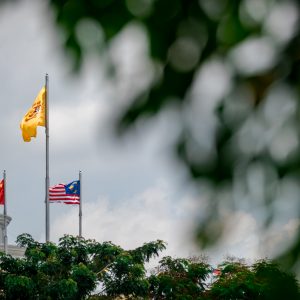Kashmir’s main river shrinking at an alarming rate
SRINAGAR, JAMMU AND KASHMIR: River Jhelum, the lifeline of the city of Srinagar and people living across the divided Jammu and Kashmir, is shrinking at a rapid pace because of encroachments, heavy siltation and incessant pollution, according to experts.
Also called Vyeth in the local Kashmiri language, the river Jhelum is the main waterway of the Kashmir valley and rises from a deep spring at Verinag in the Western part of Indian Occupied Kashmir, navigating through the capital city of Srinagar and North Kashmir and then flowing into the Pakistani-administered territory of Jammu and Kashmir. It travels 725 kilometers from its source in South Kashmir to the Jhang district of Pakistan, where it merges with River Chenab.
Ajaz Rasool- a hydraulic engineer- said that deforestation has resulted in massive soil erosion in the catchment area of the river. He went on to say that the siltation level in the river increases as a result of decreasing the catchment area and deforestation, since it minimizes the water retention capacity of the river.
Besides Kashmir Valley, river Jhelum is also the lifeline for the farmers in Pakistan’s Punjab province.
The Mangla Dam, located on river Jhelum in the Mirpur district of Azad Jammu and Kashmir, and being the seventh largest dam in the world is also fed by river Jhelum. The dam is used for irrigation and producing hydro-electric power.
Rasool cautioned that the Kashmir region could face widespread floods, similar to the 2014 Kashmir flood, which devastated the agricultural lands and took the lives of over 200 people, if appropriate measures are not taken to preserve the river.
An official of the State Pollution Control Board said that governments that followed,did not take any steps to improve the condition of the river.
“We have done its deterioration with our hands and many successive governments slept on this issue. Though many projects were approved for its restoration, it has remained just on paper,” said the official.
In order to prevent sewage from flowing into the river, the Indian government, in 1997, had planned to install interceptors, however the plan has not been executed till date, the official continued.
About 100 cusecs (2,831 liters) of untreated waste flows into the river every day through 80 small and large de-watering stations in the capital city of Srinagar alone, which houses 1.4 million people.
“The Jhelum is witnessing heavy pollution with liquid and solid waste from home toilets and hotels in districts of Anantnag, Pulwama, Srinagar, and Baramulla draining into the river without any treatment, said Ajaz Rasool.
“There is a need for a treatment plant that can help to treat this sewerage, otherwise it will be hard to restore this river. The siltation and pollution will choke it,” he added.
After the Kashmir region suffered disastrous floods across many of its districts caused by torrential rainfall, the region’s High Court asked the district authorities to provide details of river Jhelum’s original width.
Not only has river Jhelum been a significant part of the region’s civilization, but also the main transportation corridor, especially for growing and developing trade and culture.
“Every trade was through this river, that is why rich people during these times tried to reside near the river embankments so that they could easily have the facilities. It was the lifeline of Kashmir which was also vibrant with cultural traditions and politics,” Abdul Ahad, a leading historian, said.










